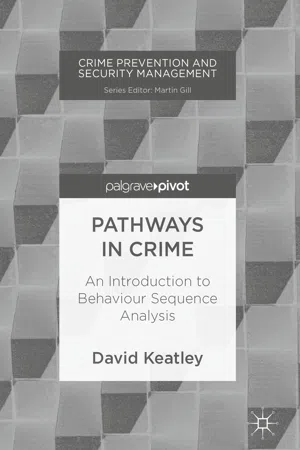Now that the basics of Behaviour Sequence Analysis (BSA) have been outlined, it is time to look at some real-world examples, based largely on recently published articles. The main purpose of this section is to provide a commentary on the processes behind the conception, development, and eventual publication of the research. Often, when an article is published, a lot of the background information on the creation of the research is lost or omitted, for the sake of word counts or presumed knowledge on behalf of the readers. Therefore, for the novice reader or researcher in the area of BSA, the current section will provide all of the information that is required to fully understand the articles in a way that would facilitate your own versions or replications. The novice reader is encouraged to read the chapters within this section, and then proceed to read the published articles. The aim is that by the end of this section, you will be fully equipped to deal with any dataset to produce publishable articles and outputs. Each chapter will provide explanation of why certain approaches were used, as well as consideration of the responses received from (anonymous) reviewers and editors, who kindly helped to improve the articles, and facilitated the process.
If you have already read the articles and feel you understand them sufficiently well, it is still suggested that you at least briefly read the following chapters, as additional information and analyses are provided. In addition, the process from first developing a research question and outline, to getting an article published is a skill that is improved through iterations of the process. I provide these chapters as a short-cut to learning the lessons that took me several iterations (said: rejections and revisions) to discover.
Finally, if you feel that the topics in the following chapters are not particularly relevant to your own research area of interest, then please rest-assured, the topic or focus of the chapter may not be relevant; but, the source or type of data will be. Therefore, I encourage you to perhaps skim the focus of the study, and instead devote time to really understanding how to convert a dataset into a sequence of behaviours that can be analysed successfully in BSA. Topics covered in this section are presented below, with a brief outline of the type of data that was analysed in each case
1.1 Chapter 4: Interview/Interrogation Analysis – Driving Under the Influence of Alcohol
The section begins with qualitative accounts. Verbal interview/interrogation accounts of participants’ experiences of consuming alcohol and driving a vehicle were collected. Interviews were transcribed, and the paragraphs of information were parsed, categorised, and analysed. This research most closely matches real-world qualitative police interrogation-type data.
1.2 Chapter 5: Behaviour Lists – Comparing Sequences of Violence and the Night-Time Economy
Behaviour lists were developed, piloted, and then given to participants to record the likely sequence of events that might occur in night-time economy locations. Two conditions were compared (a pub versus a club). Behaviour lists are a quick method of conducting BSA, and very useful for student projects.
1.3 Chapter 6: Online Behaviour Lists – Sexual Assaults and Rape Cases
A behaviour list was developed in relation to sexual assaults involving a female victim, and a male stranger. This research has since been developed to include additional scenarios, which will be outlined in this chapter. This chapter also closely relates to the real-world research using police reports. The current chapter touches on police reports and show how the method may be supported through non-restricted datasets.
1.4 Chapter 7: Card Sort Tasks: Self-harm and Prison Populations
A novel method, the Card Sort Task for Self-harm (CaTS) was developed to investigate the processes leading to self-harm in prison inmates. The data outlines what a sequence ‘hotspot’ or ‘absorbing state’ looks like, and the implications this has for interventions. The chapter also focuses on both pre-treatment and post-treatment for self-harm behaviours.
1.5 Chapter 8: Video/Observation Analysis – Nonverbal Communication and Deception
Using video data sources (e.g., from press releases, interrogation rooms, and interviews), sequences of nonverbal, body movements were analysed by hand. Computer programs that can be used are also discussed in this chapter.
1.6 Chapter 9: Big Data – Serial Homicide Database
A pre-existing large database of serial killers’ life histories was used in this chapter. Data in the file were generally coded in binary (yes versus no – 1 vs 0, respectively), and spanned over 500 variables for over 2000 serial homicide criminals. Information on ways to approach and analyse this type of data are outlined.
